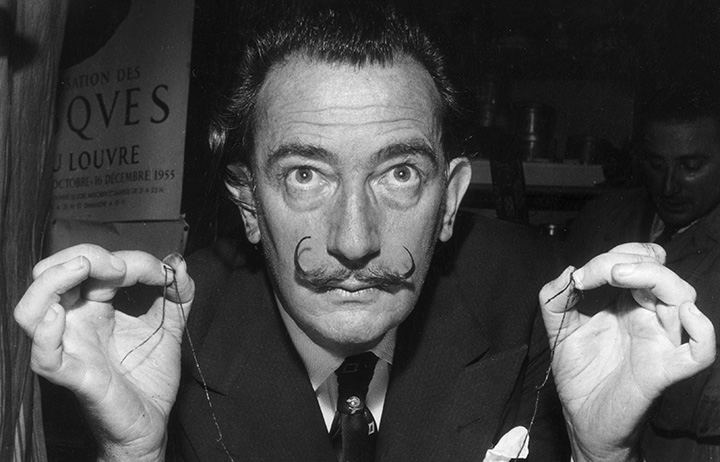FIGUERES, Spain – Officials in Spain say that hair, nails and two long bones have been removed from Salvador Dali‘s embalmed remains to find genetic samples for a paternity test – a move that opens the possibility for a woman who says she is the surrealist artist’s daughter to claim part of the Dali estate.

Pilar Abel, a 61-year-old tarot card reader, claims her mother had an affair with Dali in the northeastern Spanish town of Figueres, where the artist was born and later returned with his Russian wife Gala. Dali was buried in the Dali Museum Theater of Figueres when he died at 84 years old in 1989.
The exhumation followed two decades of court battles by Abel. In June, a Madrid judge finally ruled that a DNA test should be performed to find out whether her allegations were true.
READ MORE: Salvador Dali’s body removed from crypt for DNA check for woman claiming to be his child
Forensic experts opened the artist’s coffin Thursday night in a sensitive operation that involved using pulleys to lift a 1.5-ton stone slab.
Lluis Penuelas Reixach, the secretary general of the Gala Dali Foundation, said Dali’s remains are well conserved, mummified after the embalming process applied 27 years ago. He was speaking to reporters Friday during a press conference in Figueres.
Even Dali’s charismatic moustache had survived the passing of time and remained in “its classic shape of ten past ten,” Penuelas said, referring to the position of the hands of a clock.
According to judicial authorities, only five people -a judge, three coroners and an assistant- were allowed to oversee the removal of the samples out of respect for the remains and in order to avoid any contamination.
Representatives of the foundation managing Dali’s estate said Friday the evidence backing Abel’s claims weren’t enough to justify the intrusive exhumation, and that it will continue a legal battle to nullify the paternity test.
Dali and his wife Gala -whose birth name was Elena Ivanovna Diakonova – had no children of their own, although Gala had a daughter from an earlier marriage to French poet Paul Eluard.
Abel, who for a while made her living by reading tarot cards on local television, was born in Girona, a city close to Figueres. She has fought for the exhumation because she wants legal proof that the artist was her biological father after an alleged affair between her mother and Dali.
If proved right, she could claim one fourth of the painter’s estate which is now in the hands of a public foundation, according to her lawyer Enrique Blanquez. There are no current estimates of the value of that fortune.
READ MORE: Famous Salvador Dali sculpture vandalized in Quebec City (2016)
If she is proved wrong, the Dali foundation will seek financial compensation for the costs of the exhumation.
Either way, minimizing the disruption to the museum’s operations and to the rest of Dali’s remains is the priority for the foundation managing Dali’s estate, according to its secretary. “It’s important for Salvador Dali to be returned to rest in the interior of his museum’s dome,” Penuelas said.
The foundation and the museum in Figueres took steps to make sure no images of the exhumation may emerge in public. Before work in the crypt began on Thursday, mobile phones were put in a deposit and a marquee was installed under the museum’s glass dome to prevent any photography or video from drones.
The biological samples will travel to a forensic laboratory in Madrid for analysis, a process that could take weeks.




Comments